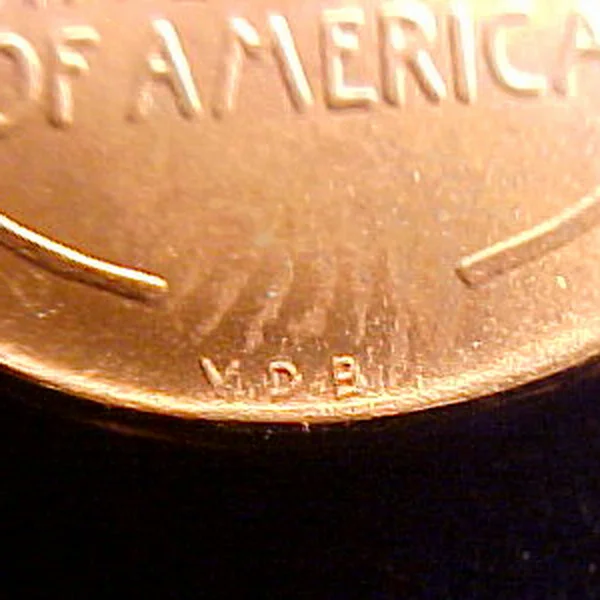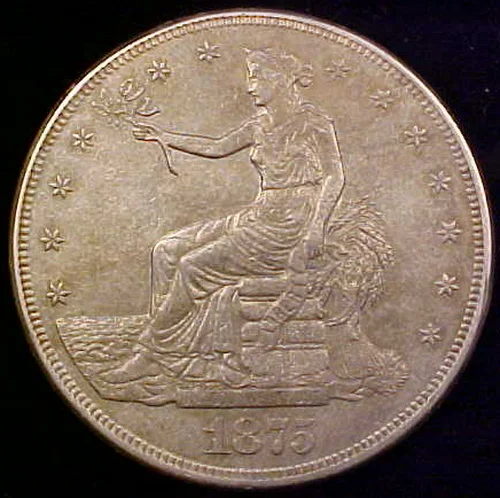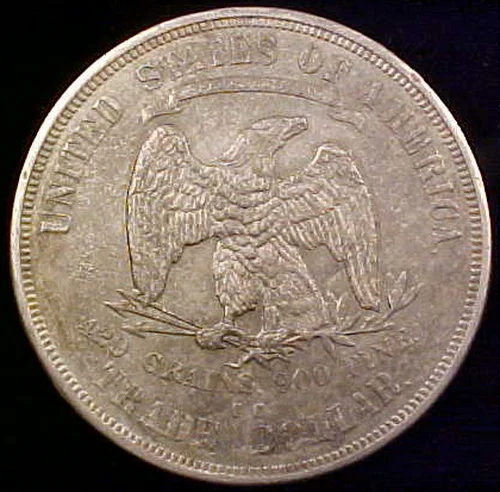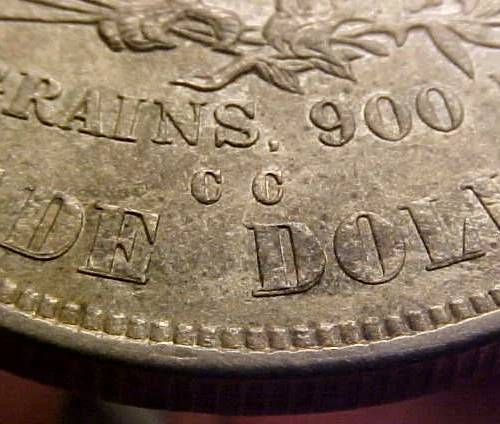Altered and Counterfeit Coins
Our goal is to help educate our collector customers to learn how to distinguish genuine, unimpaired coins from spurious or altered items. Please note that this is for purely educational purposes only. Even "experts" sometimes disagree on the authenticity of an item, or whether it has been altered from the original state, so the information here should be considered a guide only and not taken as an absolute. If there is any doubt about a particular coin, token, etc. in the mind of a viewer of this material, we recommend strongly that professional authentication by competent authority be considered.
(The copyright notice shown on the images is used to make sure these cannot be used to "spoof" anyone on any other website or electronic media.)
We define "altered" as a original, struck coin, token or medal having been changed or modified in some manner from the original state or material. This includes practices meant to remove some of a coin's precious metal content, such as sweating, shaving, and filing, in other words for commercial purposes rather than to fool a collector. It also includes the wide field of practices imposed upon collector coins in order to improve appearance, "increase" a coin's grade, repair or hide damage or otherwise "add value". Among the worst of these practices is the addition or removal of a Mintmark in order to create the appearance of a valuable "key date" coin.
We define "counterfeit" as a NON-GENUINE article, created from whole cloth to simulate a genuine coin, token or metal. This can be done for commercial purposes, such as older counterfeits produced to spend in commerce, or an item produced to fool dealers and collectors.
Altered Coins, for Commercial Purposes
The first category of coin alterations are those meant for commercial purposes. Most typically, these fall into two main areas: items made of precious metals that have had a portion of the coin material removed, or those much more unusual alterations meant to fool someone in a commercial transaction.
The first category includes "sweating", filing, clipping and shaving, all practices that remove a small portion of a coin's metal. This reserved portion is kept by the alterer and eventually the material is melted down and sold to gain the commercial value therein. This is a time honored practice, which probably started not long after coins were created in the most familiar form we know today (a cast or struck metallic disk with a definite design). Largely reserved for coins made of gold or silver, this is essentially obsolete today, but coins so modified still exist and a re a danger to the dealer and collector, in that obviously their true value is impaired. This is most often seen in hand-struck coinage from the medieval period on through the 18th Century, although true "sweating" (dropping coins into a cloth bag and shaking them to war off a minuscule amount of metal content onto the inside of the bag surface) was largely done in the time of ancient coinage.
This practice of filing/shaving became so much of a problem in Great Britain that a majority of all the gold Sovereigns in circulation were seriously underweight, and the Bank of England would only honor them at the bullion value, not the nominal face. These practices are the reason that edge designs such as the reeded edge used today on most world coinage was developed.
The second category, commercial alterations, are fewer in number. The most famous was the case of the gold plated 1883 No Cent Nickels, passed as $5 gold coins. There is some doubt as to how wide a practice this actually was, but it did occur. Another situation is the "coin on a string", where older coin operated machinery was fooled by a coin with an attached string was dropped into the feed slot to release the mechanism, then removed. Neither of these types of alterations are much of a threat to collectors today, although the "racketeer nickel" story continues to live on and is an occasional favorite of some advertisers and television marketers.
Coins Altered to Fool the Collector
This is obviously a more critical discussion to the dealer and collector than coins altered to pass in commerce, as it directly affects the value of collectible coins, tokens and medals.
There are a couple of major categories to discuss. First, there is either the removal of something or the addition of something to the coin, in order to create the appearance of a more valuable date and/or mintmark. This is most often the removal or addition of a mintmark in order to create a "key date" coin from a more common one. This has long been a problem with the 1909-S, 1914-D and 1922 "Plain" Lincoln Cents, 1937-D 3 Leg Buffalo Nickel, 1916-D Mercury Dime and 1893-S Morgan Dollar, to name the most commonly altered collector dates.
Second, there is the alteration of a coin's surface to give the impression of a higher grade and therefore higher value of the actual date/mintmark. This includes cleaning in all of its forms, re-engraving detail, the more modern problems of adding material to a coin to "enhance" or replace lost detail, adding artificial "frost" to simulate a Cameo surface, and many others.
A third and somewhat less critical category are alterations that were done for reasons other than to enhance the "collectibility" of a particular object, but rather to serve a particular non-numismatic purpose or satisfy a whim. This includes the wide field of altered coins such as hobo nickels , "potty dollars", opium dollars, coins cut out for jewelry, "two headed" coins (usually produced for magicians), love tokens and various gold and/or silver plated coins.
Non Genuine Coins, for Commercial Purposes
True counterfeits, those items made "of whole cloth" and meant to represent a coin (or currency) to be used in commerce, in other words to pass as money, are also about as old as the genuine article. Originally, the object of counterfeiting was to pass off a lesser valuable metal as a higher value metallic coinage, and make a profit on the difference. This would obviously include gold plating lead, copper, silver or other base metals to pass as a gold coin, but the same trick was used to represent silver, copper and even nickel coinage!
These older counterfeits were purely commercial in nature, but may have become a threat to collectors as they passed into the realm of collectibles. Some of these counterfeits are quite scarce today, probably in as they were found out, they would have been discarded or destroyed officially. Oddly enough, there are those people today who avidly collect these commercial counterfeits, as an adjunct to their regular collection of U.S. coinage. Some of these coin types that are popularly collected as fakes are the Shield Nickel, Bust Half Dollar and U.S. Silver Dollar series'. The images below show a few of these commercial fakes - most would not fool anyone today, but in a time of less education it was possible for these to pass as real. The changing of U.S. coin designs added to this problem, as commonly many people were not intimately familiar with the new designs after they were released.
Die Struck Commercial Counterfeits:
These first two images show a die struck, fake 3 Cent Silver of 1860, struck from hand made dies. I presume that these passed due both to their small size, and perhaps the relative unfamiliarity of the odd denomination, however it is also possible that they were accepted in circulation, even though counterfeit, due to the coin shortages during the Civil War.
The next two images show a fake 1869 Shield Nickel, also die struck from hand carved dies. Anyone familiar in the slightest with the real coin would spot this one, one would think, so these must have been passed in the hinterlands where coinage was short and people did not look too closely at what they were given!
Cast Copies:
Most of the counterfeits encountered in the first category above were made from hand engraved dies, using an original as a model. A second, much cruder category would be CAST copies/counterfeits, usually made from a mold taken of a genuine coin. As these were cast rather than struck, they were typically made of a softer, maleable metal such as a zinc alloy. Some were presumably plated in order to pass in circulation, but others may have been made to fool earlier technology coin-operated machinery, which either did not have a counterfeit detector, or used only size/weight as the discrimination factors.
In a last group would have to be added the "slug". This is traditionally a round coin-sized piece of metal, approximating the weight of a particular coin, but not necessarily having a design. These came on the scene generally in the late 1800's-early 1900's with the growth of coin-operated machinery, which typically required a Five Cent coin, a blank copy of which would be easy enough to punch out.
Also in this group are "copies" of reeded edge coinage, where a blank slug had reeding hand or machine applied - these are generally scarcer.
Lastly are the oddballs, which were created for a particular criminal purpose. The image below shows one of the more unusual that I have encountered. This is a blank copy of standard one ounce .999 Silver bullion round, which came out of a lot of silver rounds sold originally in the bull market days of the Hunt Brothers. At that point, a fake silver round might have been worth $30-40+ to the counterfeiter, certainly worth the effort.
Unfortunately, we may be returning to a period when that is again something to worry about.
Non Genuine Coins, Meant to Fool the Collector
Here I discuss the most dangerous category of fakery, the "coin" specifically manufactured to fool the collector, or dealer, and pass as a genuine, collectible item. The earliest of this type of material may be considered the electrotypes of the 1800's, which were thin copper shells copied from a genuine coin by use of electrolysis, then usually filled with a base metal to add weight and keep the shell from collapsing. The usualy targets were very scarce 17th and 18th Century Copper coinage, such as early U.S. Half Cents and Large Cents - many a copy of the 1793 Chain Cent and 1799 Large Cent were made this way.
Initially, these were not made maliciously, but rather a way for collectors to add a suitable copy of an otherwise unavailable rarity to their cabinet. These early electrotype copies are avidly collected today in their own right, properly attributed of course, as an adjunct to Early U.S. Copper collections.
A bit later came the unofficial "restrikes", made from discarded U.S. Mint dies - the most famous of which are the 1804 Large Cent copies or "Restrike of 1860". Again, these were not initially meant to fool a collector intentionally - today, this "coin" is actually listed in the Guide Book of U.S. Coins®, aka the "Red Book"®!
A some point, the effort became commercial, as a way to make money outright, not as simply an innocent way to meet demand, The earliest items along these lines were likely alterations of genuine coins (please see that section) or cast copies made from molds made of genuine, rare date coins. Later, hand made and finally commercially made dies followed. The earlier comically made counterfeit dies were likely made from the spark erosion process, or something similar, and as a result the details would not have been as sharp as normally seen. Many of these fakes were then circulated artificially, cleaned, colored or retoned to try to hide their nature.
With the increased availability of machine tools, casting equipment, die presses and today's laser operated cutting machines, the counterfeiters have moved into high gear.
Counterfeit 1928 Hawaiian Commemorative Half Dollar:
This fake has been around the hobby for quite a while, due to the very limited nature of the original issue (less than 10,000 coins). The "fakers" are are assisted in this endeavor by the fact that the real coins commonly looks "crappy", due to being distributed mainly as souvenirs in the Hawaiian Islands and subsequently being mishandled, and by the effects of tropical climate there. I also believe that the original surfaces of this issue were produced in a manner that added to this odd effect. Since so many were cleaned by former owners, the counterfeiters have gotten away with the same.
The example shown came out of an old-time collection, fooled a long time dealer and was acquired only based upon the agreement that it pass muster at a certification service, which it obviously did not. For this reason I would caution that this coin should ONLY be purchased by a collector pre-certified.
Counterfeit 1909-S VDB Lincoln Cent:
Probably "Number One on the Hit Parade", as far counterfeits in the Lincoln Cent series go. Commonly altered by adding a "S" mintmark to genuine P Mint VDB Cents, it has become more common to find die struck outright phonies of this key date. The coin shown was purchased unknowingly by a collector, possibly online. This appears to be struck from dies made from the direct transfer or spark erosion process, and is a little older type of counterfeit. The overall detail looks close to "right", but a closer inspection and some general knowledge of what a genuine coin SHOULD look like reveals the fakery.
First and foremost, the Mintmark is COMPLETELY wrong, being too large and bulky-looking, the result of being cut by hand into the die, This suggests that the original coin used was a P Mint VDB. Collectors should learn the proper diagnostics for a genuine San Francisco Mint mintmark punch of the 1908-1914 date era - for this, perhaps no better resource is available to the average person that to purchase (or borrow) a copy of the PCGS "Coin Grading and Counterfeit Detection Guide©", now published as one of the "Official© Guide" series.
Second, a basic knowledge of coin metallurgy is valuable here - this item appears to have been struck from a near pure Copper alloy, rather than the French Bronze used in 1909 (95% Copper, 5% Tin and Zinc). Genuine 1909-S VDB Cents tend to be more Golden Brown than "Red" when original Uncirculated - this item is more of a flat orangy-red unlike any genuine Lincoln Cent pre-1982. It shows some finger contact - whether this was due to sloppiness on the part of the "minter", or whether this was done intentionally to help convince potential buyers that the coin was real, I can't say.
Thirdly, looking at the overall features of this item, it just does not pass the "smell test". The rims, especially on the Obverse are too "fat" and rounded compared to the genuine coin. Also, when a counterfeit die is made by a process that uses a real coin as a model to transfer detail, whether by the spark-erosion process, direct transfer or producing a casting, minor marks and defects on the real coin are transferred to the counterfeit die. Additionally, fine details tend to be lost, become softer and more "out of focus" and odd bumps tend to show up where they should not on the "coin" produced from one of these dies. Look at the area just inside the rim of either side - there is a definite "mushy" look to the area where the fields blend into the rim. While not absolutely diagnostic, as the 1909 issue was the first year of the Lincoln Cent struck, they tend to be well made as the Master Hub was fresh, so the rims tend to be more square.
Unfortunately, we have moved into a computer-designed, laser-guided machine tool driven era, where the tools available to the counterfeiter are almost as good as those used my the U.S. Mint - and probably better than those used a century ago. Today's die-struck counterfeit 1909-S VDB is becoming much "better' at mimicking the original, genuine item. I hesitate to absolutely recommend purchasing only certified examples, but working with a knowledgeable, honest dealer with an iron-clad return policy is a must, as is adding to your own knowledge as much as possible in order to protect yourself further. One way to start is to never purchase ANY coin from anyone from China period.
Counterfeit 1875-CC Trade Dollar:
Another favorite of the counterfeit trade has always been the U.S. Trade Dollar. Some of these may have originally been made to pass in trade, as part of a larger group of coins, in the hope that one or two would pass unnoticed. The hobby has been gone through periodic waves of these phonies hitting the U.S. market. The example shown is very good, and exemplifies the modern counterfeit made to pass close examination, made using good materials on modern machinery. The worst part is, that this one is actually over a decade old, and the "fakers" are much better at their craft now. This "coin" was probably from the first large batch that showed up in the Hong Kong area about 10-15 years ago and was brought back to the U.S. by a dealer. Again, this has gone through a certification service to check on authenticity; unlike the 1928 Hawaiian above (which was assumed to be fake), this coin received a split decision from dealers who viewed it.
The date copied is just common enough in higher circulated and low end Unc grades to not strike one as being obviously unusual, such as an 1873 or 1874 Carson City Mint product might.
What makes this C/F particularly dangerous is that the heft, color, "ring" and everything else passes muster, and dealers and collectors with some experience still might be fooled. The details are crsip, show none of the loss of detail comon to items made from copy dies, which suggests an early use of laser operated machinery and cutting tools, as well as good quality die material.
A Signs of Things to Come:
Unfortunately, scarce and rare date coinage are no longer the only targets of modern counterfeiters. Due to the ease of making GOOD copy dies and striking fakes from the proper materials, even common date older coins may become a potential threat. I recently saw a group of 1884-O Morgan Dollars in a dealer's case at a large coin show, which were being discussed by a number of individuals present - the concensus was that the group could not make an absolute determination that they were genuine! In fact, it was mentioned that a major certification service was not even willing to offer a verbal opinion of authenticity, and this was for a very common coin in a very common grade. Obviously, with a U.S. Silver Dollar containing about $14 worth of Silver content (when I originally wrote this - much higher now!), taking that amount of Silver and turning it into something that could easily sell for $30 becomes practical if you make enough to get your productions costs down to $1-2 per coin, or less.
This discussion would not be complete without some commentary about the current wave of "copies", "tribute coins" or outright forgeries (take your pick) that are coming out of the East in large number. The distribution and proliferation of the current. very accurate counterfeits is made easier by two things: the Internet, which allows a "sight unseen" hand off of the product, usually paid for with electronic "money" which is difficult to trace (or prove in some cases), and outright GREED.
Today, with everyone apparently looking to make a quick buck, people are often not willing to pay a dealer what a coin is "worth" (and I use that term advisably), in hopes of getting it for half price on a popular online auction site, which shall remain nameless - they are then surprised that the item is cleaned, damaged, ugly or even not real.
I will never understand why anyone who would instantly disbelieve a coin dealer who told them that the coin that has been in their family for 50-100 years is a "fake" (in order for the dealer to "buy it for nothing"), would choose to BELIEVE some bozo in the Celestial Kingdom who swears up and down that they found a particular rare U.S. coin in a box full of their Mother's effects!
Basically, if it too good to be true, it is not. Easy as that.












